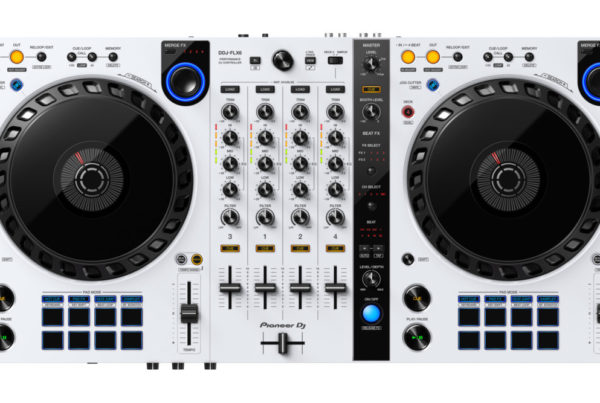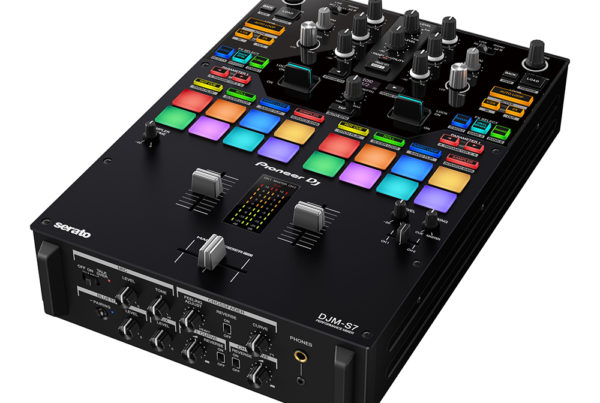When video technology finally produced LED video walls, it was a game changer. That is not to say that screens and projectors suddenly became irrelevant. Certainly, they are still in use and both screen technology and projector HD technology are doing their part to deliver pristine images on screens and even office building walls such as Production World’s projection show on the ATB Building in Edmonton.
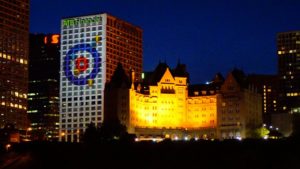
LED video walls were a welcome relief for production crews who can recall (certainly the veterans) hauling mammoth video monitors that were stacked and linked to create large video screens.
Enter the LED wall, a multi-panel configuration of screens that can be connected or grouped into separate modular panels (sometimes referred to as LED tiles) and programmed in many ways from single images to multiple images. The entertainment and corporate event sectors has definitely capitalized on the visual creativity.
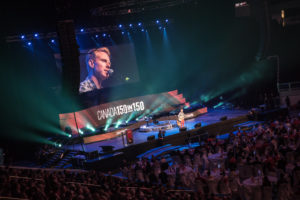
Video wall front
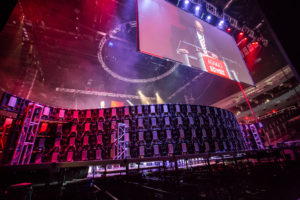
Video wall rear
LED video walls are not only versatile in how they are configured, but also how they are functional and effective in outdoor daylight or nightlight. LED video walls employ “pixel pitch”, which establishes the image resolution at a minimum viewing distance. Pixel pitch is measured in millimetres from the center of one pixel to the center of an adjoining pixel; the smaller the pitch, the better the image. When more LEDs are packed into a square inch, the smaller pixel pitch increases pixel density delivering a seamless and complete image even when viewed more closely.
Pixel densities on panels such as those produced on ADJ DS LED video panels pack 10,816 pixels per square metre on their DS4RA 4.8mm rectangular panel to 43,264 pixels per square metre on their DS4 square panel. In addition to rectangular panels, ADJ manufactures square as well as triangular panels lending themselves to multiple stage designs.
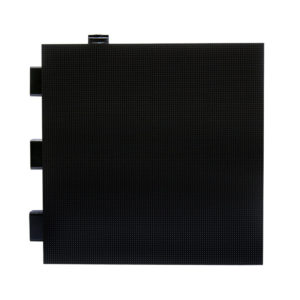
Like anything, LED video walls come in a range of prices, but one has to be careful with the lower value products. In less expensive tiles, the shielding can often be deficient leading to powerful RF energy leaking out and affecting wireless audio systems. If direct sunlight is not an issue (such as an indoor entertainment venue, house of worship, etc, then projection technology is a solid option and much less expensive. Plus, 4K or UHD (ultra high definition) laser projectors are cost effective in terms of long-term care and operation.
What makes the LED video walls so popular is that they can be broken down and transported easily, one of the reasons the music industry loves them for touring applications. The Rolling Stones deployed a 23 metre high by 11 metre wide LED video wall for their “No Filter” European tour. They also mounted four 20 metre high by 9 metre wide walls on the four, large, onstage towers. To see what they did, read the case study at WI Creations.
It’s difficult to imagine what technology will unleash next, but it is clear that LED video walls are the new standard. Beyond the entertainment sector, they are showing up everywhere — museums, malls, outdoor signage and more. Companies like Samsung have more than taken notice and are now producing LED video panels for commercial and consumer applications. The Wall Professional, the commercial version, is scalable to whatever spatial dimensions or shape the situation requires. Rectangular sizes go from 370-cm (146-in) to 742-cm (292-in) diagonally.
Needless to say, video producers and animators are enjoying the challenge of filling the walls and playing with multiple, simultaneous visual sequences. It has turned some concerts into live music videos. Ultimately, it allows creativity to thrive — wall to wall.


